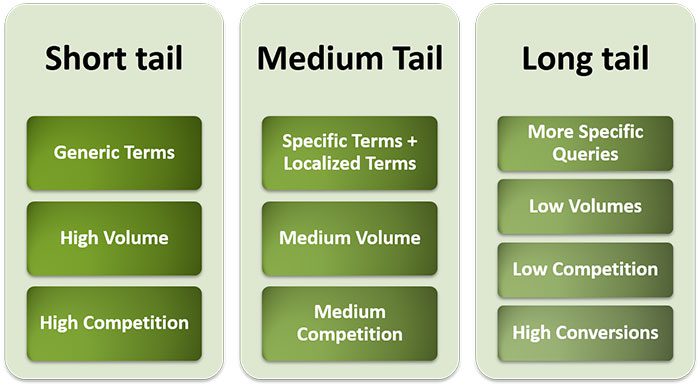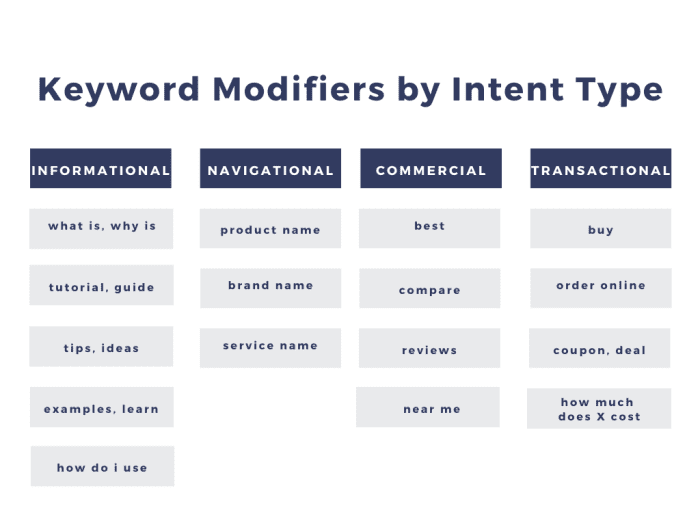With technological advancements and the overall popularity of technology, search engines have become the most used tools on the Internet. Hence, knowing how to use keywords in content writing is critical to driving traffic to your site.
As consumers and researchers use search engines to get needed information, companies, blogs, and websites use them to turn attention to them and their products. This is achieved by incorporating keywords into their writings, as they are the connection between what is offered and what the consumer is looking for.
Therefore, continue reading if you want to learn how to best incorporate keywords in your content writing, as I will explain everything.

Source: careers360.com
How to Use Keywords in Content Writing
The process of using keywords in writing begins long before beginning to write the content. After having the main topic, the first thing to do is to conduct thorough keyword research. When compiling the list of keywords, keep in mind a few rules, such as:
- Do not use keywords the competitors use.
- Keywords of less than four characters confuse search engines.
After getting the list of keywords, narrow down the list to use by having the target audience in mind. I always put myself in the reader’s shoes and envision how I would search for the topic in question.
Additionally, keep in mind who will be searching for this topic and how the keywords might be misleading. An unwanted situation is someone coming across your page but not finding what they were looking for and avoiding the site in the future.
Afterward, decide where to place the keywords in the text. I usually look at my pre-made outline and assess where the keywords would naturally appear. The mapped-out outline should show keywords being used in the meta description, the first header, the introduction, and the conclusion.
Practices to avoid when using keywords in content writing
- Avoid repetition of only one keyword
- As mentioned before, avoid using the same keywords your competitors use
- Avoid overusing a keyword (especially long-tail keywords)
Types of Keywords to Use in Content Writing
Keywords can be divided into two main groups: depending on the length of the keywords and the search intent.
Division depending on the length
Short-tail keywords
Short-tail keywords are one-word keywords. In this group, you will find generic words. For example, when someone is searching for ‘chocolate’ or ‘car’, they are searching by using a short-tail keyword.
However, using these words didn’t bring me much traffic to my site and won’t bring you either. These terms are too generic, and all of your competitors are using them within their writing.
Medium-tail keywords
Medium-tail keywords are a combination of the highly competitive term or a short-tail keyword and a low, competitive term that is longer and more specific.
For example, when I was writing an article about hotels in Asheville, I used the keyword ‘indoor pool Asheville.’ My intention was to find hotels with indoor pools to write about.
Long-tail keywords
Long-tail keywords might be your best friend and something you should turn to when writing an article. They’re the most specific out of the three types of keywords in this group. This is because they might be unique to your article, and you can rarely find them in the competitors’ articles.
Let’s take this article as an example. If you searched ‘ how to use keywords in content writing; or ‘types of keywords to use in content writing,’ you searched by using a long-tail keyword.

Source: webtrainings.in
Division based on the intent
Informational keywords
When the audience is searching for some type of information, they will include question words within their long-tail keyword searches. You probably did the same to come to this article. An example is to search ‘How many calories does a medium apple have?’ Informational keywords score high in search volume but don’t increase site traffic.
Commercial keywords
Commercial keywords are used when the audience is searching for a specific product or service.
For example, when researching the new RS-300 aquarium I bought a few days ago, I used commercial keywords to find the needed information. I wanted to find out more about how it works, what filter it has, details about the glass, etc.
Transactional keywords
Transactional keywords are purposefully used to create the need for you to take immediate action. Transactional keywords are primarily used in paid ads.
For instance, transactional keywords grab your attention when reading through an article, seeing a side pop-up, or finding anchor text leading you to a purchasing page. If you see ‘barely-used A4 Sedan for sale,’ you now know this is a transactional keyword.
Navigational keywords
If you type in the name of a company or brand into a search engine, it is called a navigational search. Even when we just type in ‘YouTube’ or ‘Google Docs,’ we search by using navigational keywords.
These keywords navigate us to the exact thing we are searching for and nothing else, as they are very narrow in meaning without any additional text.

Source: ndash.com
How to Find Keywords for Content Writing
There are three approaches that you can use for keyword research. The following tips I’ll give you are adaptations of what marketers do when analyzing big data to generate many keywords.
Keywords search tools
Once you have the main topic that your article will be centered around, you use keyword search tools. You can find many websites once you type ‘keyword search tools.’
You will find free and paid options. The free tools will work fine, but if you want more precise data, you should consider putting aside a dollar or two to subscribe to a paid keyword search tool.
Competitor analysis
When we have a topic in mind to write about and have come across a few keywords from the keyword search engines, we search by using those exact keywords.
Moreover, we research by using variations of the generated keywords. When doing this, many sites and articles come about, and then we analyze which keywords they often use in their articles.
A useful tool to find popular sites similar to what I am to write about that generate traffic is Google Analytics. I get all the information about the most popular sites similar to mine, the content I’m writing about, and which sites are getting organic traffic.
Getting into the mind of the searcher
The next stage is to consider the relevance of a compiled keywords list after developing sufficient keywords and evaluating the competitors.
At this point, I think, ‘Will my audience search this?’ and ‘How will my audience use these keywords to frame their searches?’.

Source: cedcommerce.com
Where to Place Keywords in Content
I discovered the hard way that search engines have preferences for where keywords should be placed. Furthermore, the frequency with which a term is used influences how the search engine processes the written content.
Throughout the article, a keyword should be mentioned four to eight times. All of the strategies for placement are straightforward.
So, the six most important places to write keywords are:
Meta description
As the meta description is used as an overview of the entire article in the shortest manner possible, it directs the search engine to process it immediately. A great practice is to incorporate a short-tail and long-tail keyword in this section. This will help search engines filter results better and show the article in question.
Title
The most obvious place to include a keyword is in the title. The title header and the meta description go hand-in-hand when search engines scan through articles.
However, keywords in the title must be utilized naturally, not to sound forced. When I can’t use keywords as they are in a title, I tend to come up with a variation of it that people would still search for.
Introduction
I did some in-depth research and discovered that Google’s algorithm typically reads through the first 200 words of an article. Therefore, the introduction should be filled with organically placed keywords. I opt to put the primary long-tail keywords first, then followed by the other short-tail keywords.
Headings
The use of headings is of utmost importance in content writing. Such lengthy articles with lots of information as the ones that I write (for example, this one you’re reading right now) wouldn’t attract a single soul to read it if it wasn’t well divided. A bonus to lengthy content is that it ranks much higher than shorter content.
Additionally, headings are a perfect place to incorporate keywords. Google skims through an article outline the same way a reader does. Adding keywords to article headers may be the most effective method to rank for numerous keywords.
Anchor text
Anchor texts will be your best buddies if you’re anything like me and want to write a collection of articles that revolve around the same subject and are linked together. Using keywords in your anchor text is the best approach to increase traffic to your website and click-through rates.
I try to incorporate links to similar articles I’ve written. This way, my audience can get more information, and the information they consume is fact-checked as it’s something I’ve already written.
Closure
As said before, Google reads and analyzes the first 200 words of an article. Additionally, it analyzes the last 100 words of an article as well.
Hence, I always incorporate a conclusion section where I use long-tail keywords. Keep in mind that a long article doesn’t need a conclusion just so that more keywords are included but to help the audience leave the page satisfied.
Summary
To learn how to use keywords when writing, I had to understand how search engines work; what types of keywords they prefer, the proper placement, and what practices to avoid.
Additionally, I had to practice for some time how to properly do keyword research to get the best findings. All of this was needed to learn how to use keywords in content writing.
Having said this, use the compiled knowledge I’ve presented to you wisely since it will only help you get better at overall writing and using keywords.
